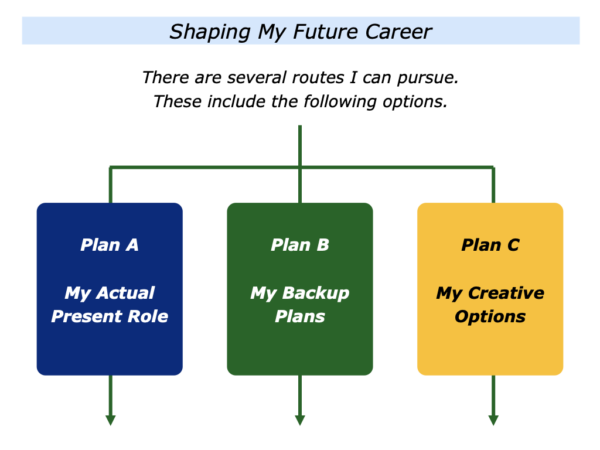
Many people recognise that the world of work has changed. There are fewer predictable career paths but there will always be projects. Bearing this in mind, how can you continue to shape your future career?
Some people follow the A, B, C approach. This involves them aiming: a) to focus on their actual present role; b) to have several backup plans; c) to also explore other creative options.
Imagine you want to follow this approach in your own way. Let’s explore how you can translate this into action.
Plan A – My Actual Present Role
The first step can be to focus on your present role. On a scale 0-10, how satisfied are you in it at the moment? Try to make sure it is at least 7+/10. How can you maintain or improve the rating?
Imagine that you are reasonably satisfied in your work. If appropriate, you then have a number of options. These can include the following:
You can continue to be super professional in your present role and, if appropriate, add more skills and qualifications to your repertoire;
You can expand the satisfying parts of the present role whilst also finding ways to make sure the other tasks get done;
You can explore how to combine these satisfying parts into creating a new role that contributes towards achieving the organisation’s goals.
What if the satisfaction rating is less than 7/10? This can be a warning sign. There may be things you can do to improve your satisfaction but it may also be important to focus on the next theme.
Plan B – My Backup Plans
Security is to have an alternative, we are told, and this is especially true in today’s world. This is the case even if your own and your employer’s prospects seem good.
The advent of new technologies can make some jobs obsolete whilst global events can lead to recessions. Takeovers can also come out of the blue and lead to redundancies.
Bearing this in mind, it can be important to have several backup plans. There are various routes you can follow to explore this approach. Let’s start with the obvious ones.
Imagine that you want to explore the possibilities of finding a satisfying role with another employer. There are several possible ways forwards.
You can look for suitable roles
and apply for them directly
This approach can sometimes work but many experienced people find it can be time-consuming and challenging. It can also sap their confidence. Bearing this in mind, let’s explore another option.
You can aim to find a role by
focusing on your professional network
Many people get jobs through their network. This is because decision makers are more likely to hire people they know who can deliver certain results. There are several ways to find a role through your network. These can involve either:
You being hired by somebody you have worked with in the past;
You being recommended by such a person to somebody in their network.
There are several things to bear in mind when taking this route. Some of these sound counter intuitive but they can lay the ground for achieving success. The first one is this:
Real networking is about encouraging other people and helping them to succeed. It is not about self-promotion.
People who get work through their network have often spent a lot of time encouraging others. They do not suddenly send people an email asking for a job.
Bearing this in mind, the best time to give to your network is when you have a job. You can then aim to encourage people in your network by showing an interest in them and their aspirations.
One approach is to meet people or keep in touch via Zoom. It can then be useful to do some research before the session. This involves aiming:
To clarify what is happening in the other person’s world;
To clarify any challenges they face or goals they want to achieve;
To clarify how you can pass on knowledge or practical tools to help them achieve success.
Different people follow this approach in different ways. Some meet face to face. Some send articles, materials or ideas that people may find interesting.
People who take this approach often find it rewarding to encourage others. Sometimes it can lead to conversations that produce future job possibilities. This can also overlap with the next step towards creating your backup planes.
You can communicate what you can deliver to help
people, teams or organisations to achieve success
Imagine that you have got to a point where you aim to be more active in finding another role. Certainly you can follow the traditional job search approach.
Another approach is to explore possibilities through people in your network. Here are some ways to make this happen. You can aim:
To clarify your strengths;
To clarify the specific things you can deliver to help people, teams or organisations to achieve success;
To clarify how you can position what you offer in a way that could be attractive to potential employers.
The latter point is crucial. It is vital to focus on the potential employer’s agenda. Some individuals make their application about them. They often list their skills and experience. Whilst this may be relevant, the key is to describe what you can deliver to help the employer to achieve success.
Let’s explore how you can follow this approach when communicating with people in your network. Below is an example of the kind of email that some people may send when exploring new possibilities.
This is quite business-like in terms of describing what it is possible to deliver to a potential employer. But it is important for a person to tailor this approach in their own way.
A Professional Update
Dear …
As you know, I have been working at … some time. This has been enjoyable and also rewarding to work with excellent people.
Looking ahead, however, there will come a point when I begin exploring possibilities for moving on. The aim will be to work with an organisation that wants to continue to deliver excellence in its chosen field.
Much depends on the organisation’s goals, of course, but here are some things that I could deliver for such an organisation. These include the following:
To build superb teams that coordinate their strengths and align their efforts to achieve the organisation’s goals;
To enable people to perform excellent work, focus on continuous improvement and help the organisation to build a great reputation;
To maintain a positive culture in which people take responsibility, have high morale and help the organisation to achieve ongoing success.
There are lots of practical examples I can give about how to achieve these results. But the key would be to focus on helping the organisation to achieve its specific goals.
Looking ahead, let me know if you think there may be any people in your network who may be interested in having these things delivered for their organisation.
I would then be happy to have an informal conversation with them about how it would be possible to deliver these results.
As mentioned earlier, many jobs come via a person’s network. When taking this approach, however, it is important to do so in a way that does not put pressure on people.
Let’s return to your own approach to developing backup plans. Imagine that: a) you have actually got an interview for a specific role; b) you are now in a position where you may be able to take it. This can involve focusing on the next step.
You can prepare properly for an
interview with a potential employer
There are many ways to prepare properly for an interview. Before doing so it is vital to do lots of research. This includes focusing on the specific role and exploring the following themes.
What are the organisation’s goals? Looking at the role, what will be the results I will be required to deliver towards achieving these goals? Bearing in mind my strengths, to what extent will I find the role satisfying?
What is the organisation’s culture? What may be the potential pluses and minuses of working in the culture? Who will be the stakeholders I need to satisfy? What is their style of leading, managing or working?
Looking at these things, do I want to go for the role? If so, what can I do to prepare properly for the interviews? How can I show that I want to make a positive contribution towards achieving the organisation’s goals?
Imagine that you want to go for the role. As mentioned earlier, there are many ways to prepare for an interview. The following section describes one approach.
This involves working through a pack that invites you to clarify your contribution towards helping a potential employer to achieve success. The pack was created many years to help people who had been laid off when their company went into administration.
The key was to focus on how they wanted to help the potential employer to achieve success rather than to try to sell themselves. Many people found it useful and reported it gave them a head start when going for interviews. You will, however, adapt the pack in your own way.
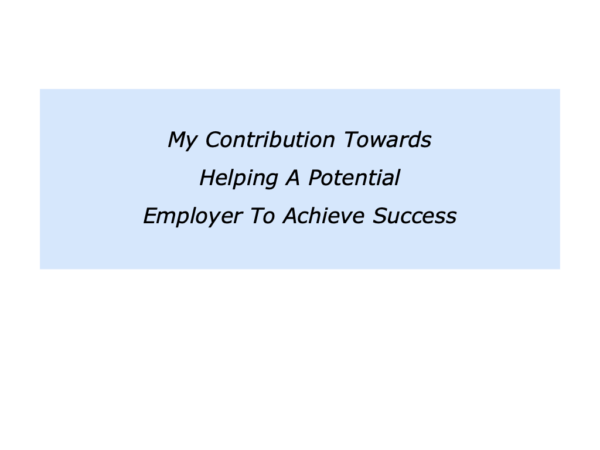
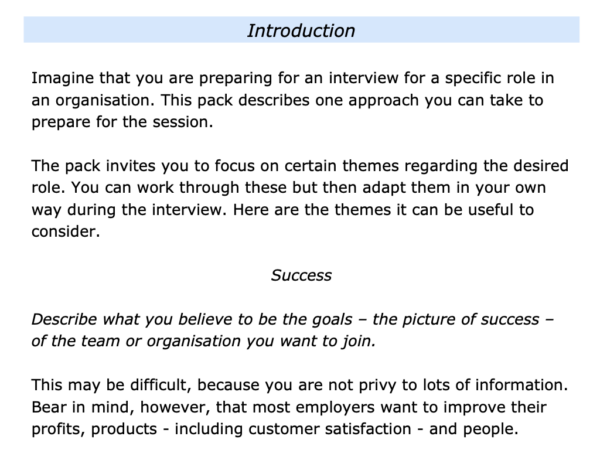
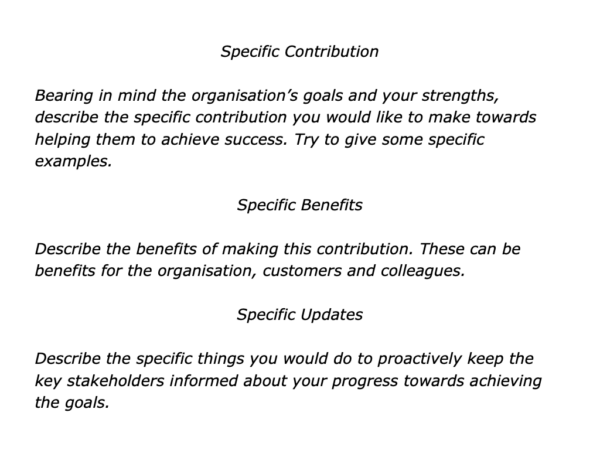
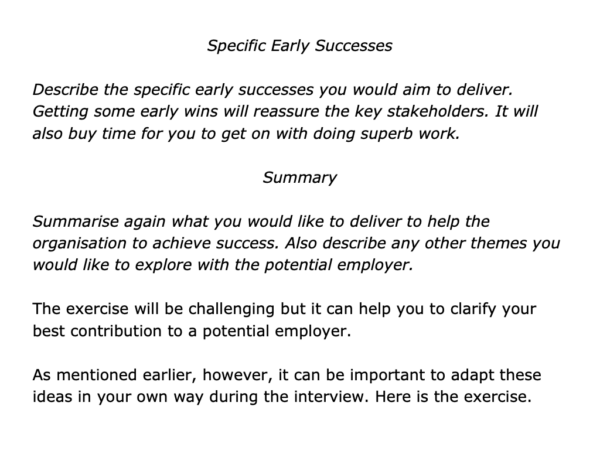
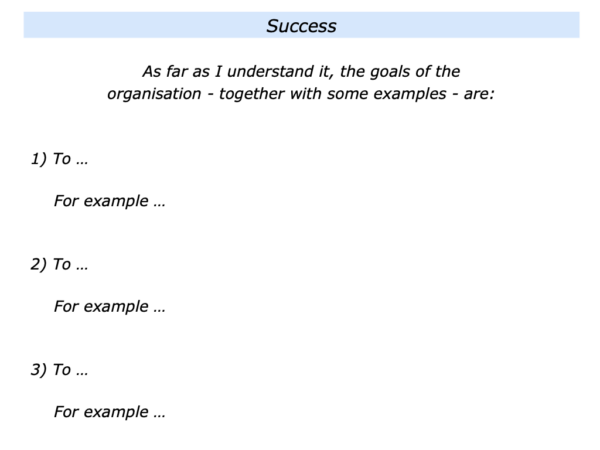
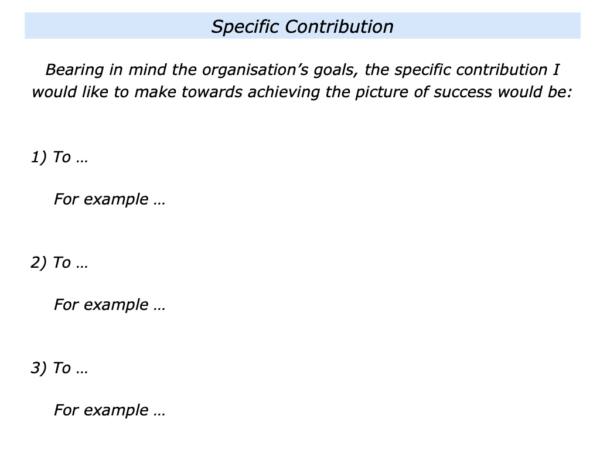
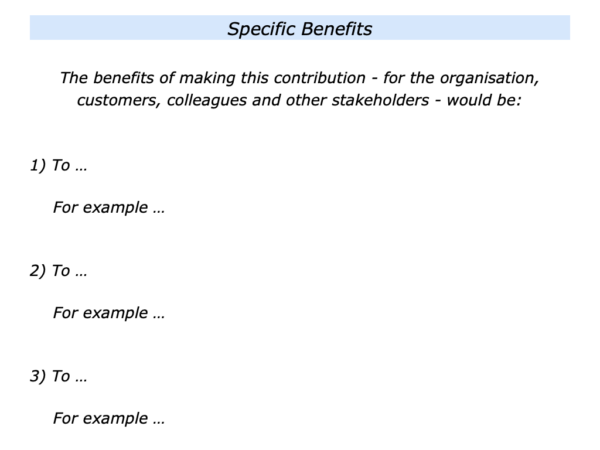
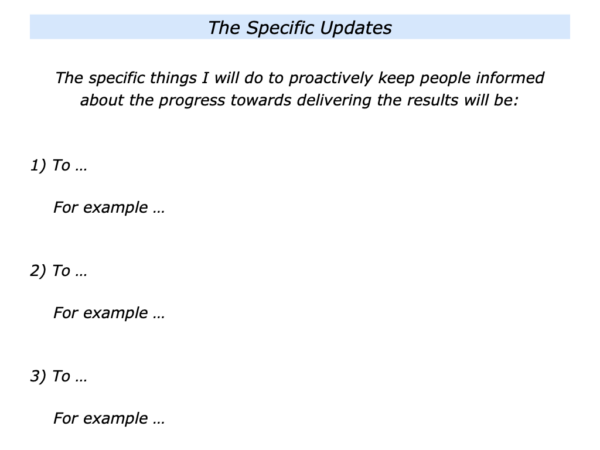
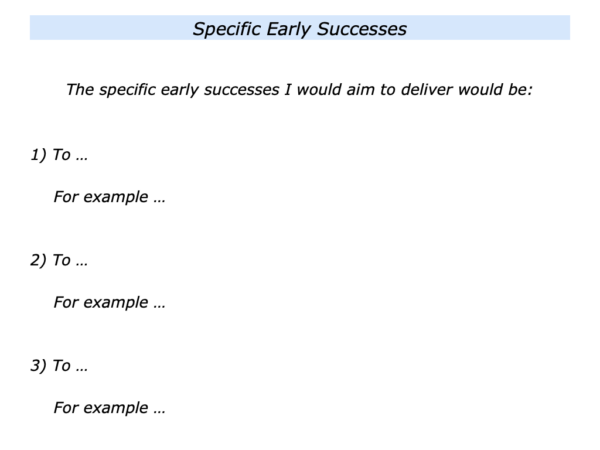
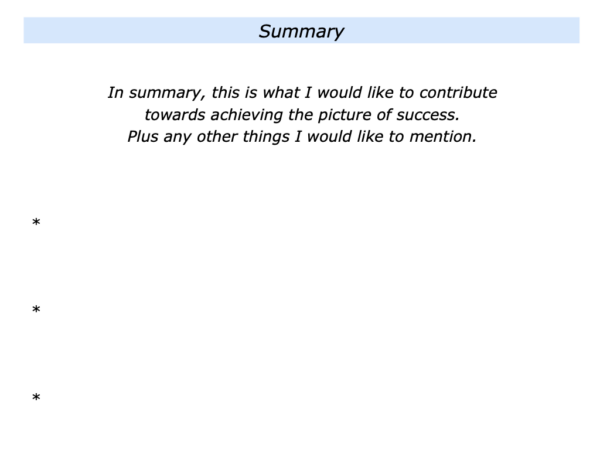
This section has explored how you can add to your backup plans for shaping your future career. It has mainly focused on the possibilities for finding another full-time role in an organisation. Let’s look at other routes you may wish to consider.
Plan C – My Creative Options
Many people explored this approach during the Covid lockdowns. Much depended on their financial situation, but some pursued paths that led to them maintaining their wellbeing whilst doing satisfying work.
People do not need a crisis to find ways to shape their future careers but sometimes necessity is the mother invention. This can also create a sense of urgency.
The following section describe some ways that people pursue potentially creative options. These include doing projects, building their own business and changing their lifestyle. Let’s explore how you may want to follow some of these in your own way.
The Projects Option
This is an option followed by many people who find it challenging to get a full time role. Imagine that you want to follow this approach in your own way. Bearing in mind your strengths, you can take the following steps.
You can clarify the specific things you can
deliver to help people to achieve success
You may have specific skills in a particular field. You may be good at delivering certain results when implementing aspects of a people strategy, solving technical issues, improving customer service, building successful prototypes or doing other activities.
Bearing this in mind, it can be useful to do the following exercise. This invites you to complete the following sentence.
Project Delivery
The Specific Things I Can Deliver When
Doing A Specific Kind Of Project Are:
*
*
*
You can aim to find a project where you can help
people, teams or organisation achieve success
The next step is to try to find a project. This may involve following similar steps to those outlined earlier regarding contacting people in your network. Many organisations have projects that are either behind schedule or not delivering the required results. If appropriate, you can find a way:
To ask people in your network if there are any projects that their people may need help to do or to complete;
To offer knowledge and practical tools that people can use to deliver the project successfully.
One approach is to offer these ideas in a generous way. You can then follow up with an email to outline the possible ways people can move forward to deliver the project. This approach sounds low key but it can sometimes result in a decision maker saying:
“How can we take this forward?”
You can make clear contracts and
deliver the project successfully
Imagine that a decision maker has hired you to deliver a specific project. Clear contracting is crucial in many areas of life. This is especially so when it comes to providing professional services. Bearing this in mind, you can make clear contracts in the following areas:
The specific results to be delivered by the project – the picture of success;
The specific overall guidelines – such as any key Dos and Don’ts – to follow when working to deliver the results;
The specific responsibilities of various people – such as yourself and any other people – in working to deliver the project;
The specific support that will be provided to deliver the project;
The specific things you will do to proactively keep people informed about the progress being made towards delivering the picture of success.
Imagine you have made clear working contracts. You may then move into action, get some early successes and perform superb work. Keeping people informed about the progress being made, you can then do your best to deliver the desired results.
Let’s assume that you have delivered the project successfully. This can sometimes lead to other possibilities – such as another project or piece of work – in the same organisation.
One approach is also to write up the project as a success story. It is then important to highlight the good work done by other people. You can also add it to your own portfolio to show what can be delivered for an organisation.
Some people enjoy the project approach. They may do one project full time for an organisation or do several different projects for different employers.
Whatever route they take, they know that every project ends. They therefore keep in touch with people in their network in to explore potential future projects. They believe in having several backup options for shaping their career.
The Building Your
Own Business Option
Some people pursue the option of starting their own business. Different people do this in different ways. Here are some of the routes they may follow.
Some make building the business their main option. Bearing in mind their strengths, they see a gap in the market, focus on a specific niche and do their best to attract paying customers.
Some continue in their present work and pursue a side project that results in developing a business. They may then switch to this full time or hand over the management of it to other people.
Some build a business out of necessity. They may lose their job or experience other issues that mean they need to make money. They may then use their entrepreneurial skills to build a business.
Some build a business out of anger. They may get frustrated by working for an employer that continually refused to adopt one of their ideas or made their life difficult. They then decide to translate their idea into a business.
Some build a business as a result of serendipity. They may be talking with a customer or employer who has a particular need or challenge. This sparks an idea that the person turns into a business.
Different people follow these approaches in different ways. Writing in the Guardian, Rachel Healy described how Kate Jackson, a former midwife, built a business after the age of sixty. Here are excerpts from the article.

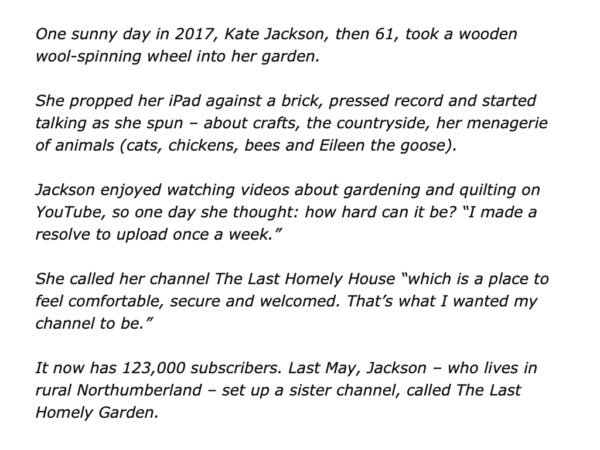
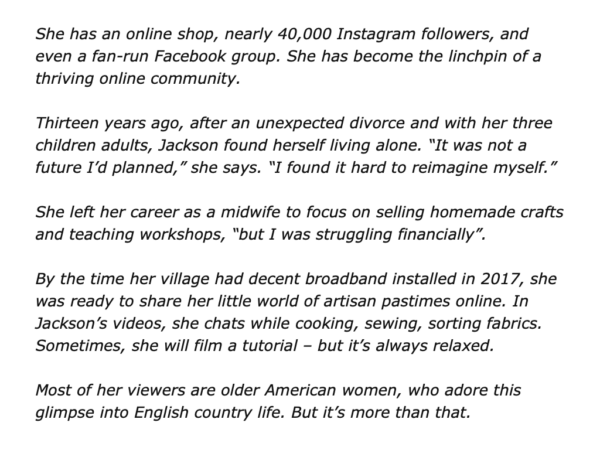
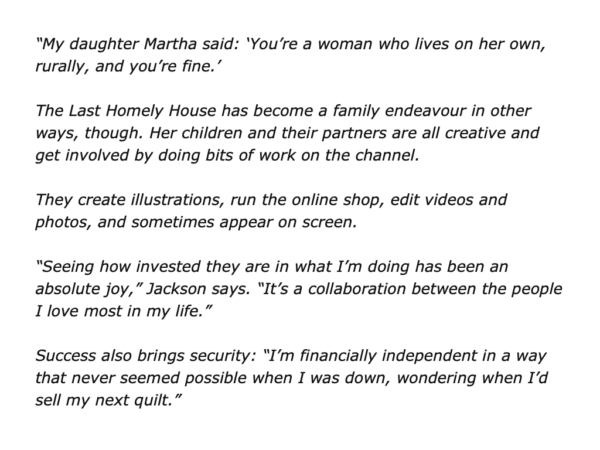
The Changing Lifestyle Option
Some people pursue this option. They may do this either: a) by doing it in a proactive way and planning ahead; b) by doing it because they need to make changes in order to survive or thrive.
Some people have enough money to follow the changing lifestyle approach in a considered way. They may aim to move home, focus on their wellbeing and do satisfying work.
Some people may change their lifestyle because of more challenging circumstances. This may call for them building on their personal and professional assets – of which they may have more than they realise – and then finding ways to develop a sustainable lifestyle.
Let’s return to your own work. Imagine you may want to follow elements of the A, B, C approach to shaping your future career. How can you do this in your own way? If you wish, try tackling the exercise on this theme.
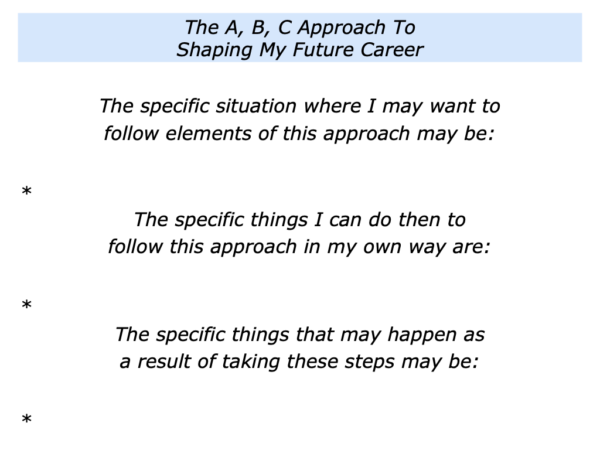






Leave a Reply